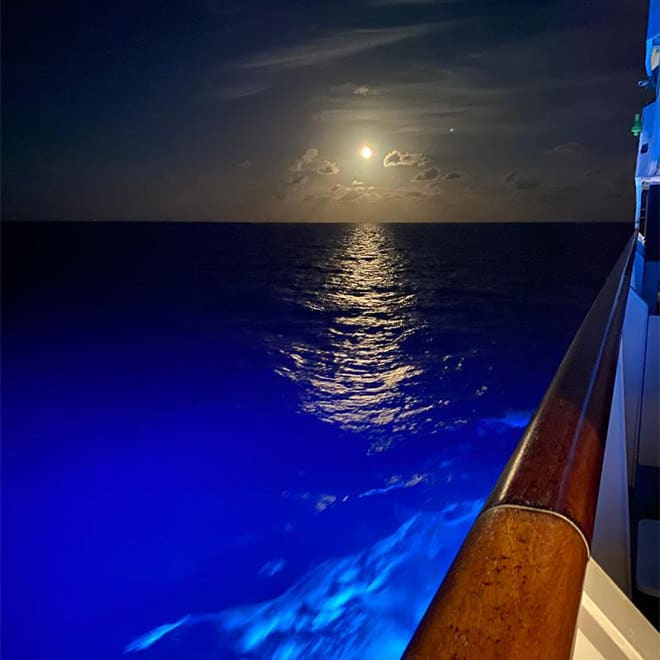I signed off the October newsletter looking forward to a relatively long trip away, which started with the Eurostar to Paris and then after a couple of days meeting with friends and family, the true adventure began.
In contrast with the divisive HS2 rail debate back in the UK, France has some amazingly fast intercity connections and having left Paris mid-morning on a Saturday, we were pulling into the station in Marseille in time for a late lunch. I barely had time to read a few chapters of 'Down to the Sea in Ships' before the sun illuminated the Mediterranean, and my attention turned towards the picturesque coastal journey between Marseille and Nice.
We had pre-booked our favourite restaurant in the Old Town, and at this point, it really felt that the office, the boatyard and our home life were very far away.
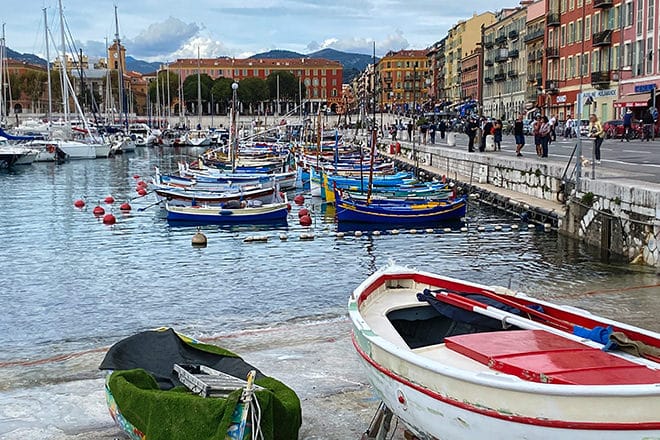
It goes without saying that food and France are synonymous, and our second memorable meal was enjoyed courtesy of one of my cousins at his local yacht club, none other than the new YCM Yacht Club de Monaco.
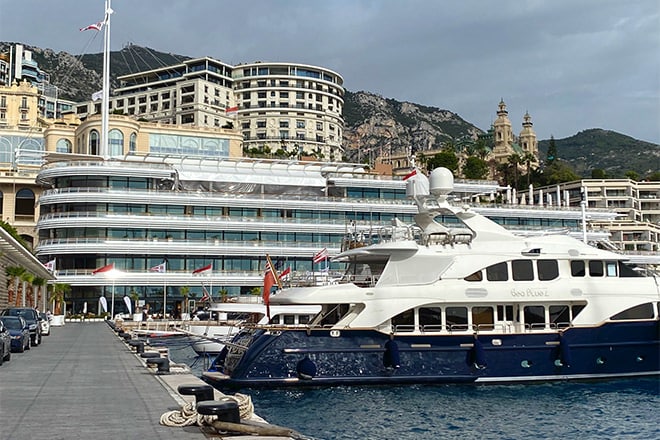
I personally think that Lord Foster's design of the Yacht club is particularly successful amid some rather ugly high rises which dominate the Monegasque skyline. Interestingly the yacht club has its own classic sailing yacht named Tuiga. Built in 1909 on the Clyde by William Fife III this is indeed a yacht to make you proud.
While Steve and I got no further than the sumptuous lunch buffet, you can enjoy a short piece of film showcasing 'Tuiga' under sail at 2023 Monaco Classic Week.
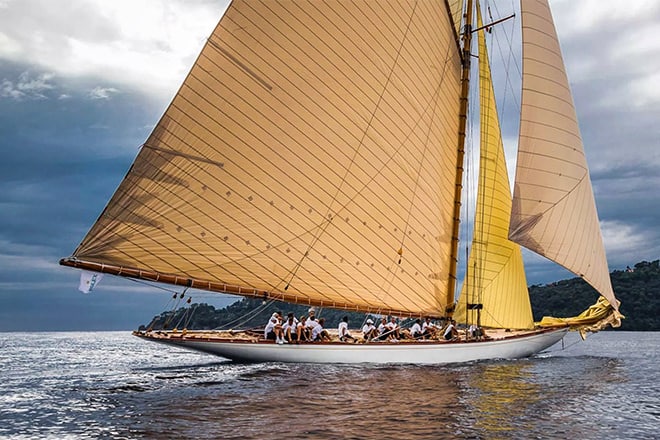
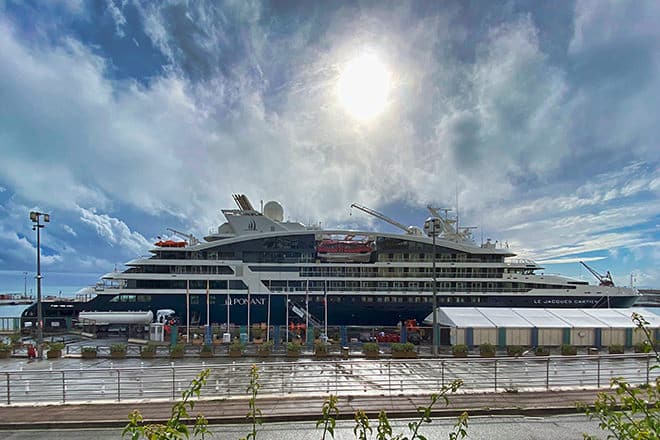
A couple of days later, now thoroughly relaxed, we embarked on the 'Jacques Cartier', Ponant's most recent Explorer ship, heading south for Corsica.
To our surprise the sea conditions made the port of Bonifacio impossible, and while I enjoyed being gently rocked to sleep by the motion of the ship, the captain decreed that we would head to Elba instead where Napoleon was exiled for a few months in 1814, having abdicated the throne. He had a rather comfortable home there with a beautiful garden overlooking the sea.
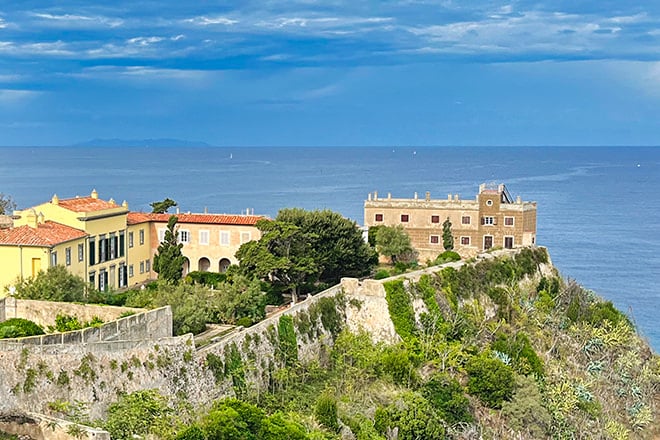
I imagine that as he looked back towards France, he knew that it would only be a matter of time before his supporters would enable him to escape his island exile and return to Paris as Emperor Napoleon I, which he did just under a year later in March 1815, a few months prior to his defeat at the Battle of Waterloo. At that point retirement to the lovely island of Elba might have seemed like a better option!
We were lucky to be able to divert to Elba. One of the joys of being on board a relatively small ship is its ability to dock on small islands, as we would see again later in our itinerary when we visited the sleepy port of Patmos.

One of the highlights for a boat nerd like me is observing the comings and goings in port, particularly the approach when a pilot from the next port has to board the boat, and equally on leaving the port when the pilot's job is done and they have to disembark onto a rocking pilot boat. One can only imagine how difficult this must be in a really rough sea.
Apparently, according to Horatio Clare (author of 'Down to the Sea in Ships') in Le Havre pilots are winged down onto the deck, from a helicopter, which I imagine makes their job a lot safer.

Let's forget the food for a moment and the complete joy of being at sea to concentrate on the historical importance of what we were seeing as we headed south on what really was an Ottoman odyssey for us.
We had the luxury of an excellent and erudite bilingual lecturer who delighted us with stories of ancient Greece, the Crusaders, and periods of peace when religious differences were set aside.
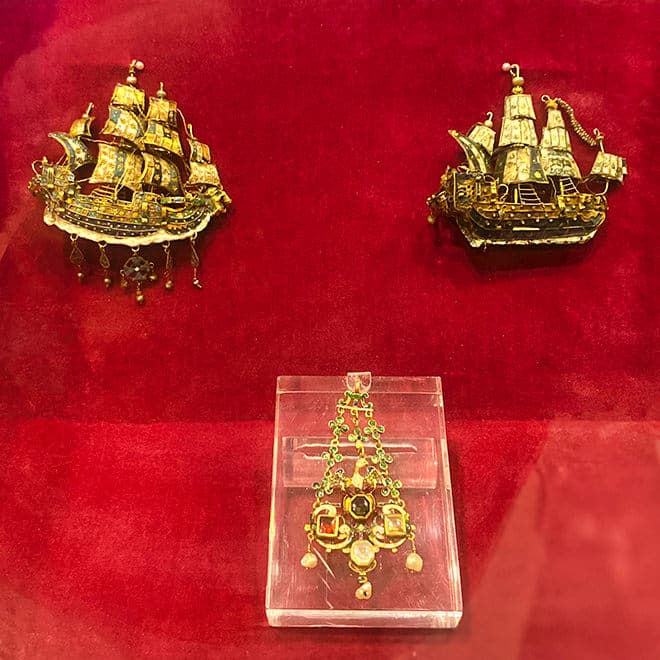
These gold pendants suggest the existence of a flourishing maritime trade and are an example of cultural exchanges, as enamel work and style would have been influenced by contact with other regions through trade. Whatever their religion, people lived in harmony and a climate of respect which fostered trade and technology and enabled people to live without fear for long periods in history.
Nowhere was this brought home to me more than on the island of Rhodes where we were fortunate enough to find a restored synagogue open to the public, full of personal stories, sadly mostly of tragedy and loss. And yet Rhodes had been a welcoming place for different cultures for 100s of years until World War II.
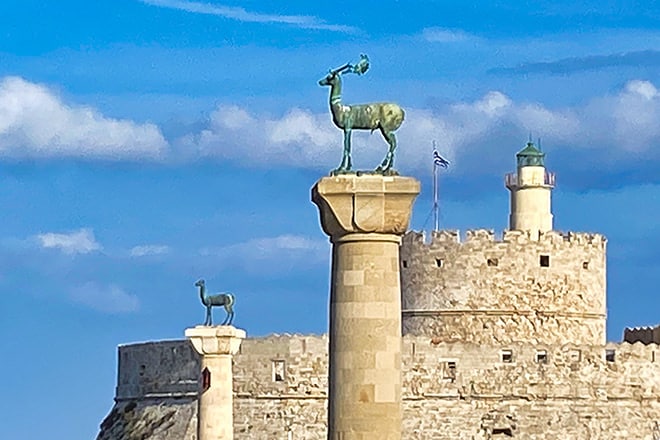
On my return from the Mediterranean, feeling a little under the weather due to an inconsiderate COVID-sneezer probably encountered in Rhodes, my prolonged absence from HSC business induced a couple of days of Radio 4 catch-up as I recovered my mojo.
Listening to 'In our Time' I chanced upon Melvyn Bragg discussing the 16th century Barbary Corsairs and privateering in general. The difference between a privateer and a pirate was that privateers were like mercenaries of the sea authorised to attack ships from opposing city-states. All booties seized by privateers were supposed to be handed over to whichever ruling body had paid them. If a peace treaty was then signed the privateers were out on their own and reverted to piracy.
If you are interested in learning more on this fascinating subject do catch this on BBC sounds.

Privateers were sometimes enslaved people who, through their privateering, had an opportunity to become free men, but basically they could come from anywhere, including England, from where one John Ward mutinied after the 'Armada' to become a Tunisian privateer. History tells us that his activities enabled him to settle in Tunis where he became a wealthy man and converted to Islam.
All big ships employ people of different origins. For example, on our ship, the Jacques Cartier, the crew hailed from at least five countries. Whilst the ship sails under a French flag, the lingua franca on board below decks is in fact English.
In the Middle Ages the lingua franca was a mishmash of mercantile languages as so many different languages were spoken by the various merchants and seafarers who worked together.

On a lighter note, we saw a few fun and alternative vessels as we wandered around the various ports we visited. Here are some snapshots.
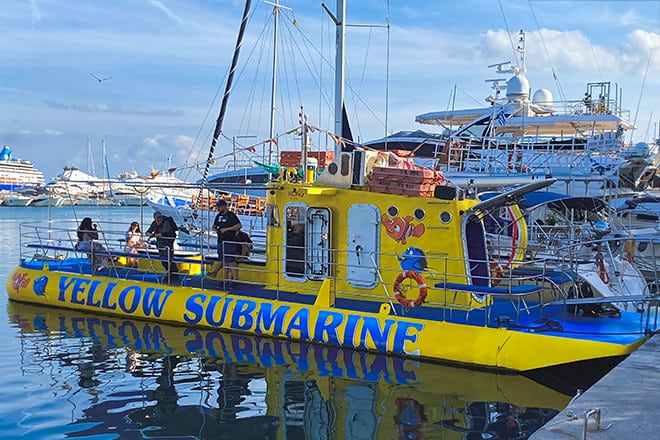
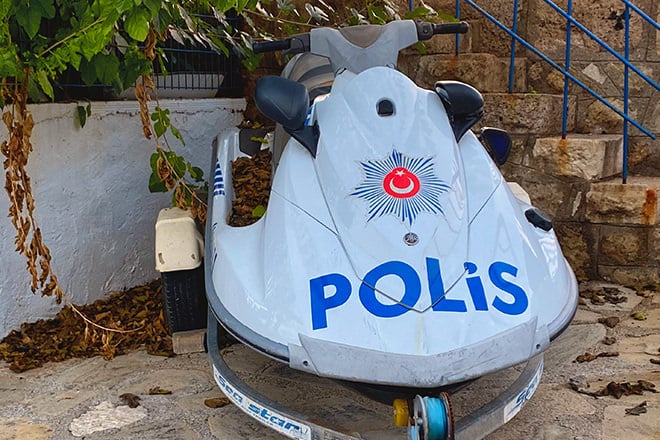
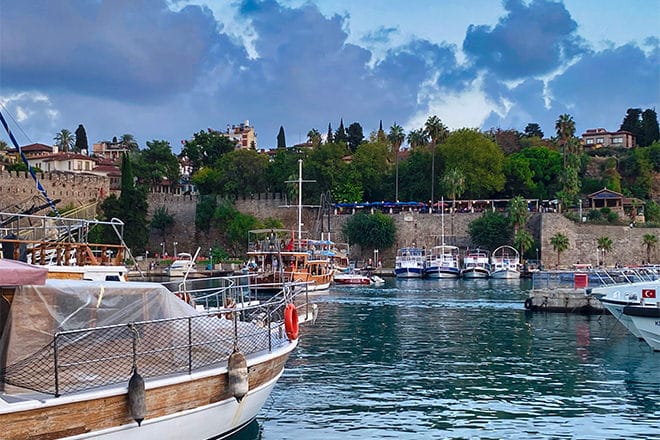
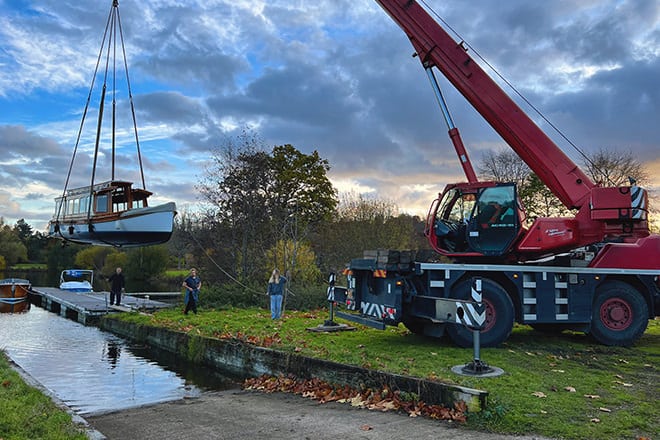
While I was away work at the yard continued apace thanks to our dedicated team led by the inimitable Andrew, who is now back at work full-time and appears to be firing on all cylinders. We have a few interesting jobs lined up to keep the boatyard busy during the winter months.
When I finally had a chance to review emails that had come in during my absence I saw that interestingly the piece on the 'Golden Hinde' had elicited a number of comments.
(By the way, I would like to thank those of you who take the trouble to comment on items from previous newsletters.)
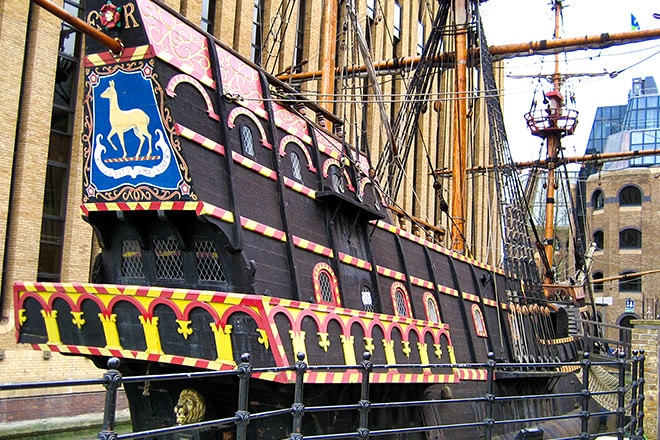
A fellow shipwright who visited the 'Golden Hinde' at the same time as I did added a touch of pragmatism to what we had been told. He felt that there was some exaggeration for the sake of theatrical impact, so thank you Sean, for the following: When it comes to the use of children or 'powder monkeys' on board, I think our guide was using a tiny bit of artistic licence referencing their age (which would more commonly have been around 10).
A Devonian reader added to the Drake story by informing us that the Hawkins family, who were shipbuilders by trade, had informally adopted Drake so he and Hawkins grew up together, with Hawkins being some eight years older than Drake. Hawkins (a maternal ancestor of mine) was in fact a privateer by trade and was most definitely implicated in early slave trading. His name has recently been erased from a street sign in Plymouth.
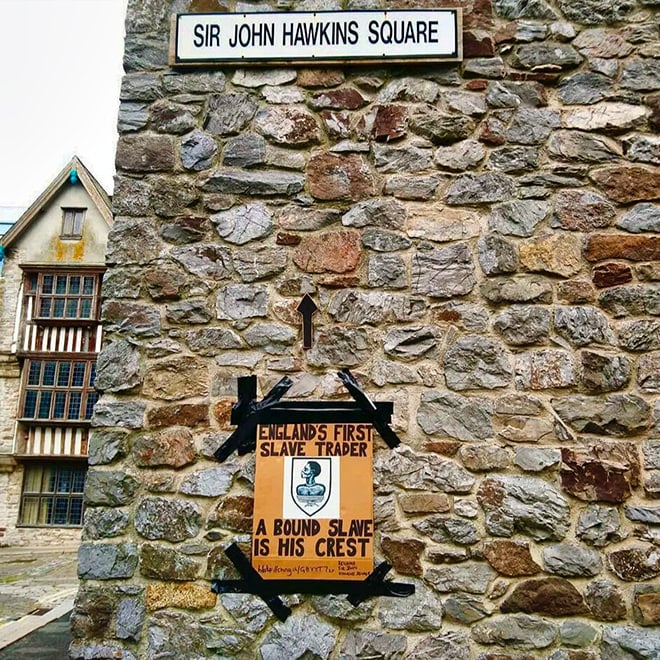
We mentioned in our last newsletter that when Drake returned, he didn't know if the Queen was still alive, nor did he know if his fiancee Mary had waited for him. Keith Johnson informs us that as it turned out, she had thought that Drake was dead and she had become 'affianced' to another. Still, when Drake sailed into Plymouth and presented her with a Spanish tea set he had plundered from a Spanish ship with her in mind, she was overawed, and they were married.
Thank you, Keith, for consulting the archives at your local museum and for sending us these interesting facts and story.
Here in Henley on Thames, our local River & Rowing Museum is celebrating 25 years and a host of roof repairs, which should give it another 25 years in which to improve and impress with its attempt to illuminate and explain our rich local history.
All good museums have attractive cafes these days, and food provision has been a struggle for the RRM. It is a gentle stroll from our office in Station Road to the museum café which we like to frequent at least once a week. The latest company to try their hand at making a success of a historically problematic location is the locally managed Velolife. The Rowing Room Café is open from Thursday to Monday.
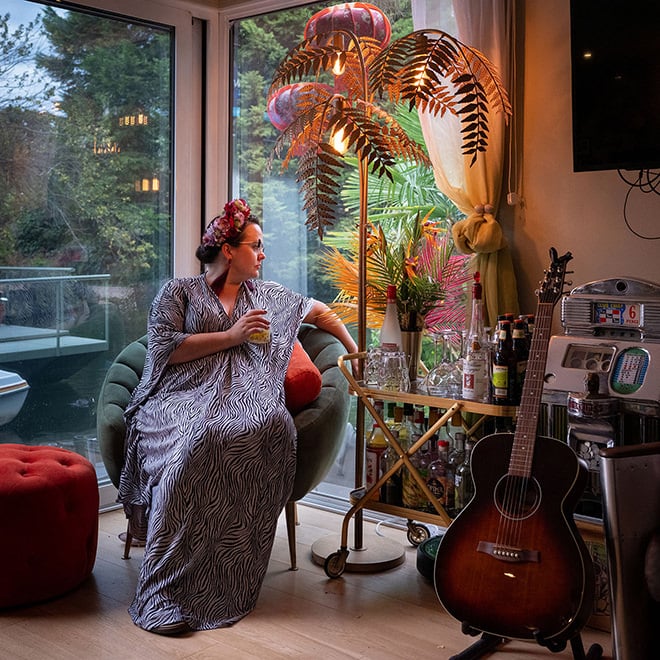
The museum's latest exhibition is called 'Island Life: a Journey down the River Thames, with photographer Jonathan Goldberg displaying some of the photographs he took on his journey from the source to the sea. The pictures he has selected to display concentrate on the lives of the people who live and work on the islands of the Thames.
It's definitely worth half an hour of your time!
Leaving you all until our December newsletter with a dramatic photo taken during our Mediterranean adventure.
